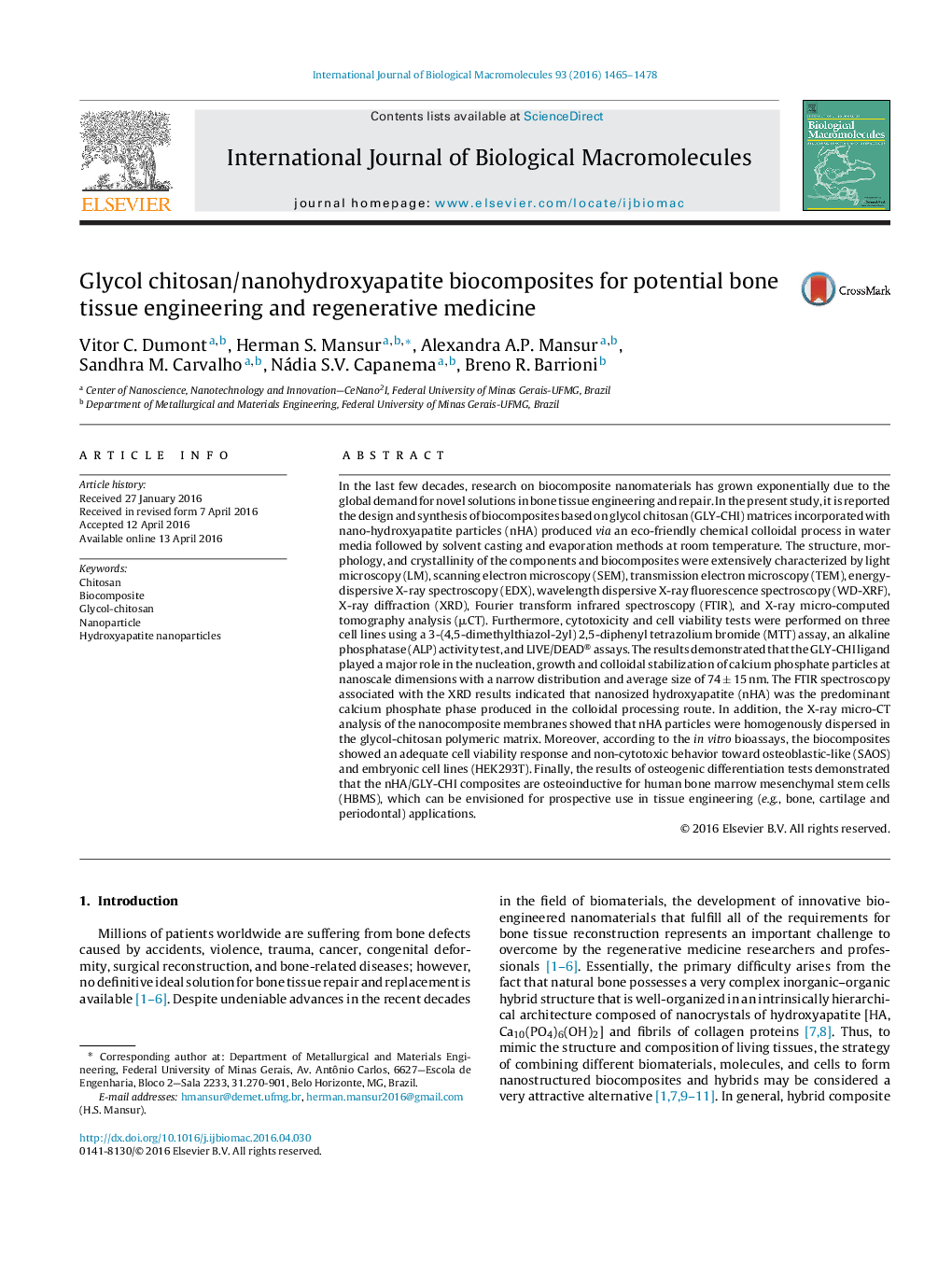| Article ID | Journal | Published Year | Pages | File Type |
|---|---|---|---|---|
| 5512129 | International Journal of Biological Macromolecules | 2016 | 14 Pages |
In the last few decades, research on biocomposite nanomaterials has grown exponentially due to the global demand for novel solutions in bone tissue engineering and repair. In the present study, it is reported the design and synthesis of biocomposites based on glycol chitosan (GLY-CHI) matrices incorporated with nano-hydroxyapatite particles (nHA) produced via an eco-friendly chemical colloidal process in water media followed by solvent casting and evaporation methods at room temperature. The structure, morphology, and crystallinity of the components and biocomposites were extensively characterized by light microscopy (LM), scanning electron microscopy (SEM), transmission electron microscopy (TEM), energy-dispersive X-ray spectroscopy (EDX), wavelength dispersive X-ray fluorescence spectroscopy (WD-XRF), X-ray diffraction (XRD), Fourier transform infrared spectroscopy (FTIR), and X-ray micro-computed tomography analysis (μCT). Furthermore, cytotoxicity and cell viability tests were performed on three cell lines using a 3-(4,5-dimethylthiazol-2yl) 2,5-diphenyl tetrazolium bromide (MTT) assay, an alkaline phosphatase (ALP) activity test, and LIVE/DEAD® assays. The results demonstrated that the GLY-CHI ligand played a major role in the nucleation, growth and colloidal stabilization of calcium phosphate particles at nanoscale dimensions with a narrow distribution and average size of 74 ± 15 nm. The FTIR spectroscopy associated with the XRD results indicated that nanosized hydroxyapatite (nHA) was the predominant calcium phosphate phase produced in the colloidal processing route. In addition, the X-ray micro-CT analysis of the nanocomposite membranes showed that nHA particles were homogenously dispersed in the glycol-chitosan polymeric matrix. Moreover, according to the in vitro bioassays, the biocomposites showed an adequate cell viability response and non-cytotoxic behavior toward osteoblastic-like (SAOS) and embryonic cell lines (HEK293T). Finally, the results of osteogenic differentiation tests demonstrated that the nHA/GLY-CHI composites are osteoinductive for human bone marrow mesenchymal stem cells (HBMS), which can be envisioned for prospective use in tissue engineering (e.g., bone, cartilage and periodontal) applications.
Graphical abstractDownload high-res image (118KB)Download full-size image
